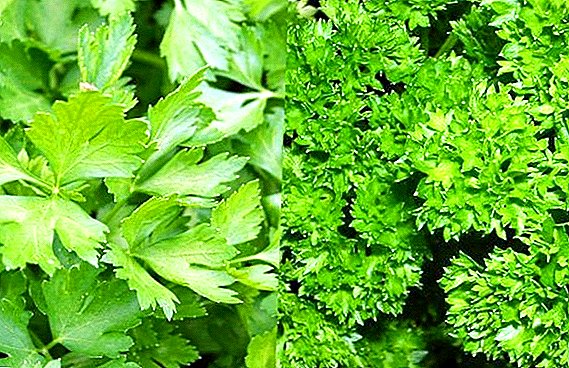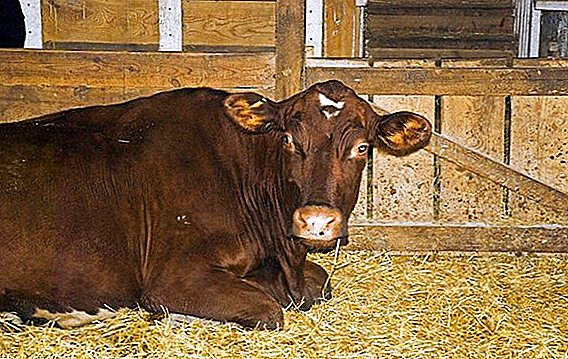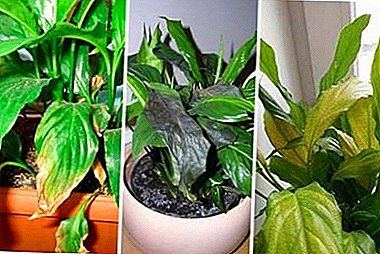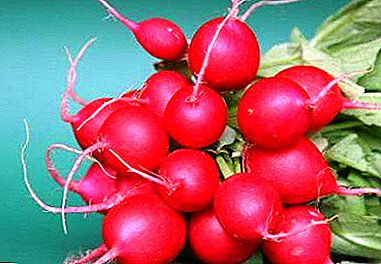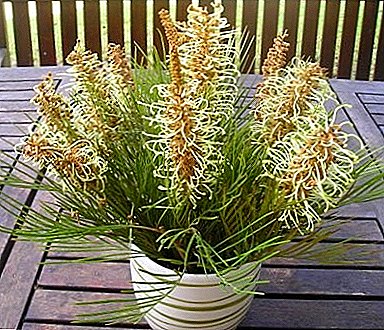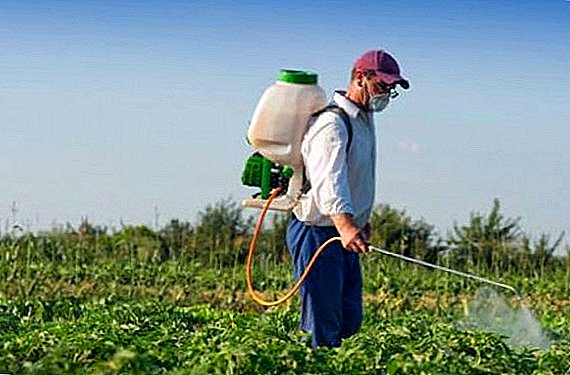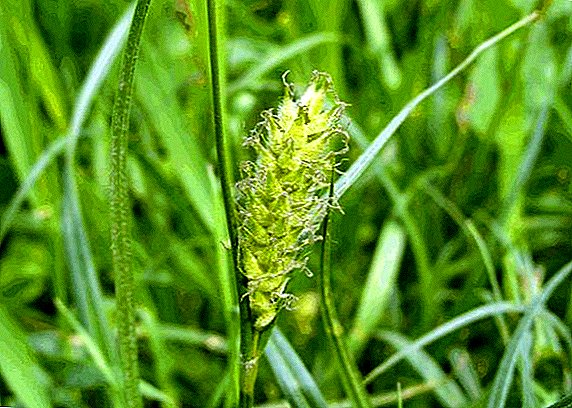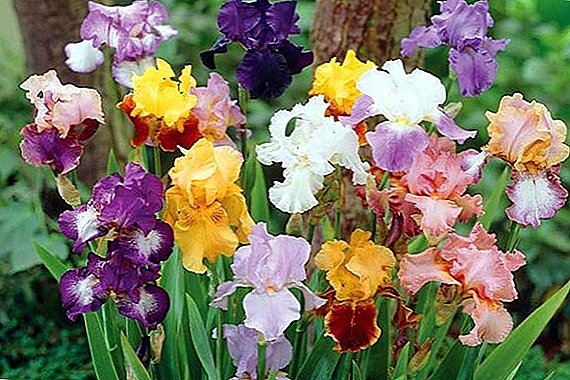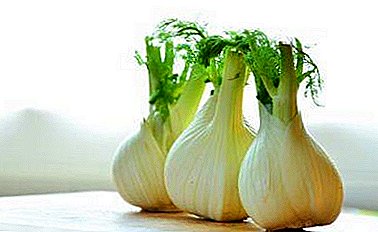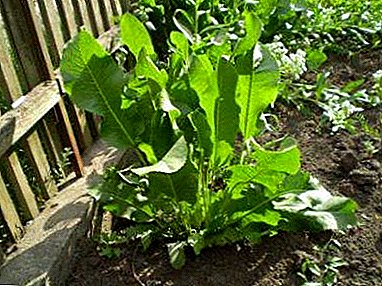
Horseradish is a very popular seasoning in Russian cuisine. It is used in cooking and in folk healing, as the leaves and the root of horseradish can cure many ailments. But the decision to grow this extremely useful vegetable in your backyard often leads to an extremely unpleasant situation - it grows and fills with itself places where it is absolutely not needed. In this article, we learn why horseradish can grow so much, why it is necessary to deal with it and what difficulties may arise in the process, how to get rid of horseradish in the garden once and for all, and also about preventive actions to avoid problems with the plant in the future.
Why is growing so much?
Horseradish rhizomes go both inland and sideways in several directions. The root system is very powerful, filled with a huge number of sleeping buds. Cutting with a shovel a piece of root or digging up the soil, part of the shoots can be easily transferred to another corner of the plot. Next year we receive several bushes - from each cutting a new one will grow. The width of the root system of horseradish extends up to seven meters - and it is very tenacious, easily tolerates both frosts and droughts.
Why do I need to remove from the site?
If you do not remove the overgrown bushes in time, let alone allow the seeds to bloom and spread, horseradish literally fills the entire garden, displacing all other crops. Its large, wide leaves create an extensive shadow, and the powerful root system sucks all nutrients out of the soil, not giving a chance to less tenacious neighbors in the area. For several years wild horseradish is able to destroy almost everything that grew in the garden.
The reasons for the possible difficulties of struggle
 Simple digging and weeding - standard methods of weed control - get rid of horseradish is difficult. Even in a two-year-old plant, the root system spreads very deeply and widely. Digging up the entire root is almost impossible. There will always be at least one process, from which a new bush will later grow. He is very tenacious - even after applying the chemistry often survives and continues to spread throughout the garden.
Simple digging and weeding - standard methods of weed control - get rid of horseradish is difficult. Even in a two-year-old plant, the root system spreads very deeply and widely. Digging up the entire root is almost impossible. There will always be at least one process, from which a new bush will later grow. He is very tenacious - even after applying the chemistry often survives and continues to spread throughout the garden.
Horseradish frost-resistant, shade-tolerant, unpretentious to the soil - grows on almost any. But there are methods that allow you to get rid of the vegetable turned into malicious weed forever.
Step-by-step instructions on how to get rid of the plant
How to fight by digging?
Digging is effective only in the first two years after planting horseradish. If you dig up the rhizomes at this time - digging the soil around at least two meters and a meter deep - you can get rid of the vegetable forever.
If horseradish grows in one place for more than two years - its roots become thin, very branchy, go deep into the ground to a greater depth and are very difficult to remove. Digging becomes too time consuming and ineffective in controlling weeds.
Lightproof materials
Blackout most gardeners consider the most effective method of dealing with horseradish. Carry out the procedure in early spring when the first shoots begin to appear. This way to get horseradish is very simple - the place of growth of the vegetable must be closed with any dense dimming material. Suitable:
- slate sheet;
- dark opaque film;
- piece of ruberoid;
- sheet of plywood or metal.
Like any plant, without light horseradish dies. For prevention, the darkening material is recommended to be left for at least two years in order to avoid re-growth of the remaining roots.
What to use of herbicides and how?
 If the blackout does not help or you need to remove the weed already in the current season - you can use herbicides.
If the blackout does not help or you need to remove the weed already in the current season - you can use herbicides.
The most effective:
- Tornado - a tool that is applied to the leaves of the plant, it penetrates through the stem to the root system, destroying horseradish very effectively. Sprinkle greens should be very carefully, in dry, windless weather, so as not to damage the surrounding crops.
- Roundup, unlike other herbicides - an effective, but safe enough tool for the surrounding plants. Roundup destroys the upper part of the vegetable without affecting the root. Immediately after its application, it is necessary to plant other cultivated plants next to the pickled horseradish.
Saltpeter
For weed control, ammonium nitrate can be used.
For maximum effect you need:
- As far as possible, cut the leaves to the ground, expose the roots and insert small plastic tubes into them.
- Ammonia nitrate is poured inside the tubes.
The chemical penetrates the root system and destroys it. The procedure must be repeated at least twice per season, and in the fall, dig the site deep, selecting the roots.
You can also use regular storehouse nitrate for fertilizers. It is necessary to bring it under the root of horseradish several times throughout the season, until the most frost. Saltpeter will constantly stimulate plant growth, preventing it from preparing for wintering, and the root will freeze out.
Root depletion
If you have time and patience - you can get rid of horseradish in a few seasons by depleting its root system. For this:
- bush several times per season pruned;
- dig around the roots and select as deep as possible;
- perennials are planted at the site of the bush - for example, clover.
So the root system of horseradish is gradually exhausted and the plant will die.
How to remove quickly and forever?
 If you need to get rid of horseradish as quickly as possible - you need to use an integrated approach.
If you need to get rid of horseradish as quickly as possible - you need to use an integrated approach.
- Cut the plant under the root, using a syringe to inject the herbicide into the roots - for example, "Tornado".
- After the complete death of the plant, carefully dig up the soil, choosing even the smallest roots, and plant a clover or any other densely growing perennial on the place of the dead horseradish.
With this approach, even accidentally survived roots, without receiving light, will gradually die.
Prevention
To horseradish does not grow throughout the garden - its root system must be limited in advance to a small space. For this vegetable is planted in:
- metal buckets;
- dense crates;
- old barrels.
Reference! The metal is impenetrable to the roots, and there will be no problems with growth.
Thus, to get rid of horseradish, or rather its spread over the land, it is necessary to act in a comprehensive manner. That is, you need to simultaneously use several methods of struggle. In the fall, it may seem that horseradish has been eliminated, but even the tiny surviving roots can produce abundant shoots in spring. We have to start all over again. Therefore, in order not to complicate your life - it is necessary to prevent the growth of horseradish at the planting stage.


